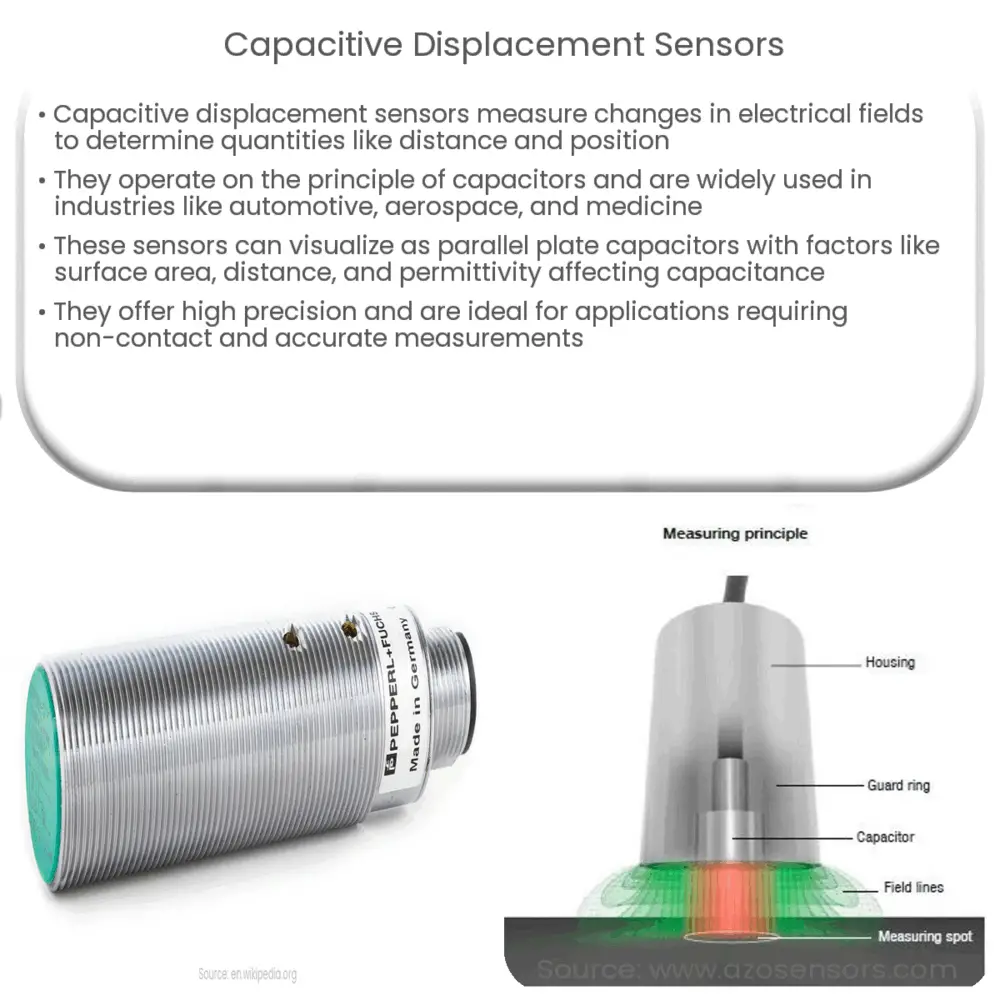Explore the workings, types, applications, advantages, and limitations of capacitive displacement sensors in diverse fields.

Introduction to Capacitive Displacement Sensors
Capacitive displacement sensors are sophisticated instruments that measure changes in an electrical field to assess physical quantities such as distance, position, or proximity. They work based on the fundamental principle of capacitor, which is a device capable of storing electrical energy within an electric field.
Their high precision, compact size, and versatility have facilitated their widespread use in diverse fields such as manufacturing, automotive, aerospace, and medical technology.
Working Principle of Capacitive Displacement Sensors
At its simplest, a capacitive sensor can be visualized as a parallel plate capacitor. The amount of capacitance in a capacitor is determined by the surface area of the conductive plates, the distance between these plates, and the permittivity of the material in between.
- Surface Area: In most capacitive sensors, the surface area remains constant and thus does not impact the measurement process.
- Distance: The distance between the plates is typically what the sensor measures. As the distance changes, so does the amount of capacitance.
- Permittivity: Permittivity is a measure of how an electric field affects and is affected by a dielectric medium. While usually constant, it can also be a variable in some specialized sensors.
When a change in distance occurs between the sensor and the target, it alters the capacitance of the sensor. This variation can then be converted into a corresponding change in voltage, current, or frequency, providing a measurable output. Since capacitive sensors can detect even minute changes, they are perfect for precise measurement tasks.
Types of Capacitive Displacement Sensors
There are two main types of capacitive displacement sensors:
- RF or oscillator-based sensors: These utilize an oscillator circuit whose frequency changes with variation in capacitance.
- DC or linear-based sensors: These sensors produce a voltage or current output that is linearly proportional to the displacement of the object.
Choosing between RF or DC-based sensors largely depends on the specific requirements of the application, such as resolution, range, and environmental conditions.
Applications of Capacitive Displacement Sensors
Capacitive displacement sensors find wide-ranging applications due to their ability to deliver high-precision measurements and non-contact operation. Here are a few notable applications:
- Industrial Manufacturing: These sensors are commonly used for on-line thickness measurement, vibration measurement, and for controlling the positioning and alignment of precision equipment.
- Automotive: In automotive applications, capacitive sensors are often used to measure fluid levels, the thickness of brake pads, and tire tread depth.
- Aerospace: These sensors are used for thermal expansion measurement, gap measurement, and vibration analysis.
- Medical: In medical technology, these sensors are used for non-invasive displacement measurements, such as in medical imaging devices.
Advantages and Limitations
Capacitive displacement sensors come with several advantages. Their non-contact operation prevents mechanical wear, and their high-resolution capabilities allow for precision measurements. Moreover, they are relatively unaffected by temperature fluctuations, magnetic fields, and most solid, liquid, or gaseous media.
However, these sensors also have a few limitations. They are sensitive to changes in the dielectric constant of the target material and the surrounding medium. Large changes in humidity, for instance, can affect the readings. Moreover, these sensors are generally suited for short-range measurements.
Conclusion
In conclusion, capacitive displacement sensors are versatile, high-precision instruments that are integral to numerous sectors, from manufacturing to medical technology. Their non-contact nature, high precision, and resistance to environmental factors make them an ideal choice for various applications. Despite some limitations, their advantages often outweigh the challenges, making them a vital tool in today’s technologically driven world.

